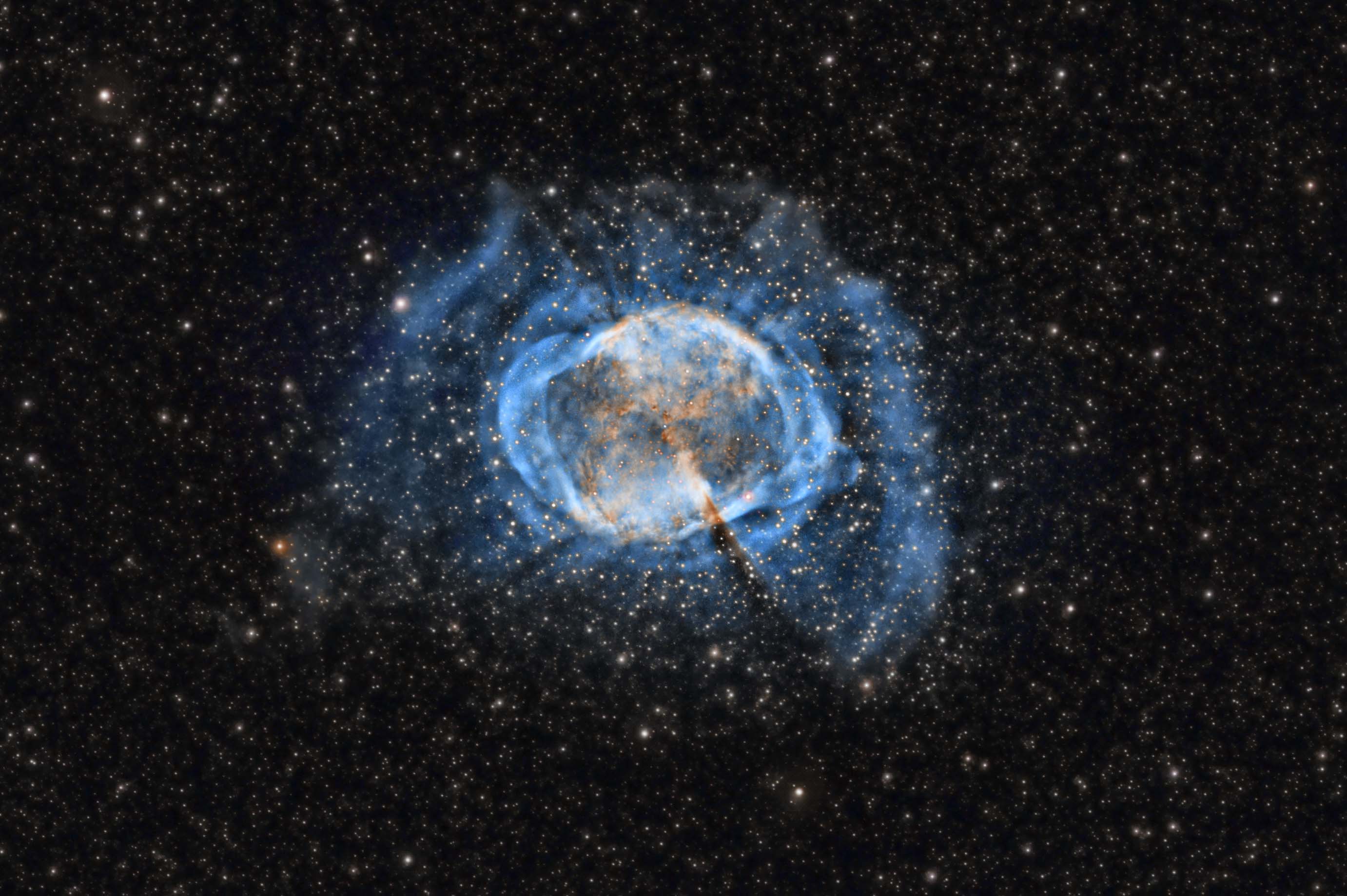
Almost every day the Sun is out, keeping us warm and illuminating our days, giving us the energy to be living beings on Earth. (Well, OK, some places are cloudier than others, but the Sun occasionally shines even in Milwaukee.) The Sun is everlasting, omnipresent, the source of our energy and the life-giver for a little community of sentient beings on a modest planet like Earth.
But the Sun won’t last forever. Radiometric dating, using radioactive isotopes as natural, precise clocks, tells us that the Sun is about 4.6 billion years old. From the ionized hydrogen of a gas cloud like those we scattered across our sky, hydrogen and other elements came together by gravity and ignited nuclear fusion, creating our star. It has been furiously converting hydrogen into heavier elements ever since. That’s simply what stars do.
The Sun is a G2V star, which means it is a whitish, main-sequence star. The G2 part refers to its color-temperature classification and the V means it is on the main sequence. Although the Sun’s light output peaks at yellow/green wavelengths, we characterize its light as white due to the distributions of colors and intensities. As you may imagine, the greatest numbers of stars are represented by dwarfs. The Sun is far larger than dwarf stars, and the percentage of stars like the Sun in our galaxy is something like 7.5. But our Sun is far from the largest stars. Supergiants are many times larger than our star.
Since the pioneering days of Henry Norris Russell and Ejnar Hertzsprung in the early 20th Century, astronomers have come to understand stellar evolution quite well. We now understand much about the life stories of different kinds of stars, and the critical characteristic in a star’s life journey is its mass. We know that the most massive stars, supergiants, have relatively short lives. They fuse elements furiously, ending their journeys as normal stars in a few millions of years. They often end in spectacular supernova explosions, and can leave behind a legacy in the form of a stellar black hole. The least massive stars, those plentiful dwarfs, quietly go about their lives and can last unimaginable lengths of time, perhaps a trillion years or so. They may end up as the embers still silently glowing in otherwise dark remnants of galactic disks. Middleweight stars like the Sun are understood well. They tell a familiar tale that can be witnessed across the sky on any clear night with a small telescope in the backyard.
The fate of a solar-mass star
When a solar-mass star runs out of fuel to burn, so to speak, it swells in size and transforms into a red giant. As it attempts to fuse heavier and heavier elements, it becomes increasingly unstable, and eventually puffs off material, forming a short-lived planetary nebula. These glowing gas clouds were named for their telescopic resemblance to the disks of planets as observers saw them in the 18th Century. But they are in fact the remnants of the dying star, fluorescing due to their excitement by the remnant star in their center. Examples of planetaries, which last about 50,000 years, are familiar to astronomy enthusiasts. Among them are the Ring and Dumbbell nebulae, easily seen from a dark sky in even a small scope.

Our Sun falls into this class, as measured by its mass, that will produce a planetary nebula, dissipating into the surrounding interstellar medium, and leaving behind a white dwarf remnant stellar core. This will happen about 6 or so billion years from now. So our Sun, at 4.6 billion years, is just about at the middle age point of its normal life.
We can be especially glad that, notwithstanding whether we take care of our planet and ourselves, and extend humanity far into the future, our Sun will be around for a long time to come. It is the source of all the energy that makes our existence possible, and the greatest nuclear reactor in our galactic vicinity. Perhaps some of the early cultures, like periods in ancient Egypt, who worshipped the Sun, kinda had the right idea. Maybe that’s something to keep in mind the next time you step outside and catch a quick glance of that solar disk in your sky.
David J. Eicher is Editor of Astronomy, author of 26 books on science and history, and a board member of the Starmus Festival and of Lowell Observatory.









